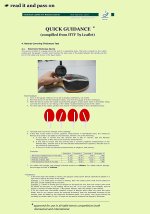Technically speaking
The term "Tensor" in table tennis refers to a specific trademark for a large series of rubbers manufactured by ESN in Germany for many companies, including Tibhar, Donic, Joola, Xiom, Joola, Andro, Adidas, and a few others I am forgetting. There are many of them sold, so many it is impossible to keep up. The complete trademark is "Tensor Bios" and you will see a little logo on the rubber and on the packaging. In official terms, if a rubber does not have that logo it is not a "Tensor". ESN has never manufactured rubbers for Butterfly, or, as far as I know, for Stiga. Therefore, technically speaking, Tenergy is not strictly speaking a "Tensor". Tensors are "speed glue effect" rubbers introduced not long before the speed glue ban in 2008. One of the first rubbers in this long series was Donic F1. There have been many generations of them, with a bewildering array of topsheets, sponge hardness, and other variations. You read different things as to how they get their "speed glue" effect, but it appears to be a combination of chemical additives to the sponge and something they add to the top sheet. Early generations of Tensors had extremely brittle topsheets and would crumble very easily around the edges---sometimes just mishitting a ball was enough to make it happen, and they would start flaking around the edges in a week or less. They have gotten better in that regard. Butterfly had more success attracting top-level players with their Tenergy series, which seems to rely more on natural rubber in the topsheet, a special large pore design in the sponge, and less on adding of volatile boosters in the sponge in the factory. After several years of delay, a few other companies have introduced their versions of this approach, such as Tibhar Evolution, Donic Bluefire, and others. If you look on those rubbers, you will not see the Tensor Bios trademark, and I do not know where they are manufactured or by whom. It could still be ESN but if so, they are moving away from their Tensor trademark for these rubbers.
Some people use the word Tensor to mean any "speed glue effect" rubber, which at this point would mean pretty much any relatively new (since 2008) rubber designed for modern topspin play. (People sometimes use the word tensor for a rubber the same way they may say "xerox" as a verb to describe photocopying something). But you should bear in mind that the way something like Butterfly gets its "speed glue effect" is rather different from something like, say, Xiom Omega or Andro Hexer. So you really shouldn't call Tenergy and its imitators tensors.
Edit: Which scanning up I see is just what Andy Smith wrote. He seems to beat me to the punch a lot of the time. LOL!!!











